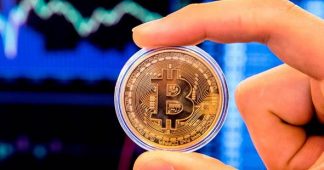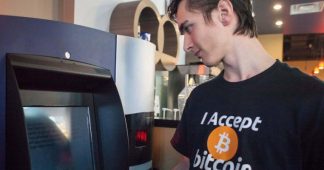by on
Following the steep rise in the price of Bitcoin since autumn 2020, public interest in this cryptocurrency has been reignited. Yet the massive drop in price since its peak on January 8th and the subsequent rebound show the volatility of such an investment.
No one can predict where Bitcoin’s price will go. This is simply because speculation is always about expectations. In concrete terms, anyone who buys Bitcoin today has to form expectations about what expectations other investors will form about Bitcoin. And the latter in turn must also ask themselves what the expectations of other investors might be.
John Maynard Keynes, not only a gifted economist but also a fierce speculator, explained these dynamics in his 1936 classic, The General Theory of Employment, Interest and Money, by the pre-feminist analogy of a beauty contest. In his times, newspapers organised such contests, where readers had to choose the supposedly prettiest among the faces of women, and they had only a chance of reward when they decided on the face which received the most votes:
“It is not a case of choosing those [faces] that, to the best of one’s judgment, are really the prettiest, nor even those that average opinion genuinely thinks the prettiest. We have reached the third degree where we devote our intelligences to anticipating what average opinion expects the average opinion to be. And there are some, I believe, who practice the fourth, fifth and higher degrees.”
Financial history teaches that such processes can lead to pronounced price bubbles which, when they burst, can end in a total loss.
Private money production
Anyone who buys Bitcoin today should know what they are buying. Many people regard Bitcoin as digital gold. But is this an adequate analogy? The mechanisms of private money production, which at first glance are very complex, can be illustrated by a simple example. Mr Smith decides to participate in the currency competition. He prints one million notes bearing ‘100 Valuecoin’. On the back it is expressly pointed out that the holder of such a note has no legal claim against Mr Smith.
Now Mr Smith can try to sell his notes against the euro. He starts with an exchange rate of 1:1. But why would anyone spend €100 on a piece of paper that has no intrinsic value and promises nothing? Mr Smith refers to the example of Bitcoin, in which the quantity is also limited. By comparison, there is no upper limit on government currencies. The Valuecoin could thus have the advantage of gaining value against official money in the manner of Bitcoin. Soon 100 Valuecoin could be worth much more than €100.
Now, one could wonder why only Mr Smith should have the privilege to make money out of nothing. Again, it is geared to the model of Bitcoin. He decides not to put all the notes into circulation himself and to establish a mechanism for the issuance of Valuecoin, which ensures that the Valuecoin money supply can only increase gradually.
Thus, he organises a game of dice with friends once a week. Whenever a participant rolls a one on four dice simultaneously, he receives 100 bills. To prevent the bills from circulating too quickly, over time the number received on successful dice rolls is reduced. So, after the first year, participants only receive 50 bills for a successful throw; after that, the amount reduces further
In addition, the level of difficulty is increased when a particularly large number of visitors are present. Then, no longer four but five dice are used and ‘five ones’ must be rolled. As more and more interested parties are expected to attend the dice game over time, this mechanism also makes it increasingly difficult for those involved to create new Valuecoins.
Huge profits
This is similar to the emission process of Bitcoin (‘mining’), where the degree of difficulty has risen from a factor of one in 2009, when Bitcoin started, to around 20,000 trillion most recently. In other words, the initiator of the scheme made huge profits by mining Bitcoin in the early years.
Mr Smith assumes that knowledge of such a mechanism, which ensures a gradual expansion of Valuecoins in addition to the fixed ceiling, helps make his private currency attractive. Overall, it ensures that the benefit of being able to exchange worthless bills for government money is not left to Mr Smith alone. Rather, it is socialised with the participants of the dice game, who can acquire the Valuecoin notes by strenuous dicing.
This coincides with the Bitcoin model, where miners have to solve highly complex computational tasks, which requires huge computing power and enormous power consumption. Since one gets to the Valuecoin notes more quickly in the beginning, those who participate from the beginning are favoured. This, of course, especially benefits Mr Smith as the initiator of the scheme.
Nothing fundamentally changes, in the mechanisms described so far, if Mr Smith does not issue his money as printed bills but digitally via accounts. He sets up a centralised Valuecoin settlement system, where all holders of Valuecoins keep an account. After a successful throw, they will receive no bills, but the Valuecoins will be credited to the participant’s account in the clearing system of Mr Smith.
By buying Valuecoins against the euro from the dicer, outsiders can also open an account on the Valuecoin billing system. This makes the private money system perfect. Digital transfers can now be made between account holders. With the digitalisation of the whole scheme, the dice-game evenings are abolished. Now, anyone can build up Valuecoin balances by participating in the online game.
Disappearing organiser
What distinguishes Mr Smith´s Valuecoin from Bitcoin so far is the central accounting system he manages. Instead, Bitcoin uses a decentralised system, the ‘distributed ledger’. In such a system, there is no central accountant anymore. Rather, in principle, each participant can make bookings in the ledger. Those participants with higher computational power have however an advantage, as they may be able to perform more ‘proof of work’—akin to Valuecoin’s dice throws.
In any event, the organiser of the whole thing disappears behind the scheme he has created. Thus, for outsiders, it is no longer clear that Mr Smith is the creator of Valuecoin.
In terms of economic logic, Bitcoin is nothing other than Valuecoin. The only difference is that Bitcoins are not created in a transparent dice game but in a complex, extremely energy-intensive process. Crucially, here too the holder has no claim against the issuer, who is the big winner in this game. Even if he participates in the issuance, he is at an advantage because it is particularly easy to get hold of the coins at the beginning.
One often hears that there is no redemption right for the holders of a euro banknote either. The difference is that banknotes are legal tender and the European Central Bank has a monopoly on their issuance, while Bitcoin is in increasingly intense competition with around 8,000 cryptocurrencies. Thus, at any time, another cryptocurrency with better technology can become the darling of investors, displacing the ageing Bitcoin.
The competitive pressure from new issuers is also a fundamental difference vis-à-vis precious metals, in particular gold, whose special position no new chemical element could emerge to challenge. The lack of a unique selling proposition is therefore Bitcoin’s Achilles heel. While there is no alternative to physical gold, there are other cryptocurrencies that could dethrone Bitcoin sooner or later.
This article is a joint publication by Social Europe and IPS-Journal
* Peter Bofinger is professor of economics at Würzburg University and a former member of the German Council of Economic Experts.
Published at www.socialeurope.eu











